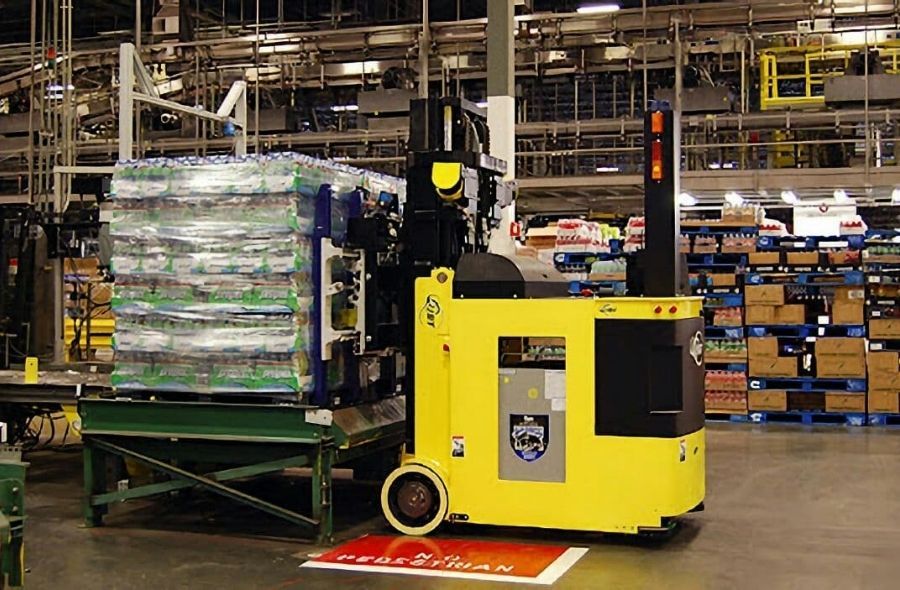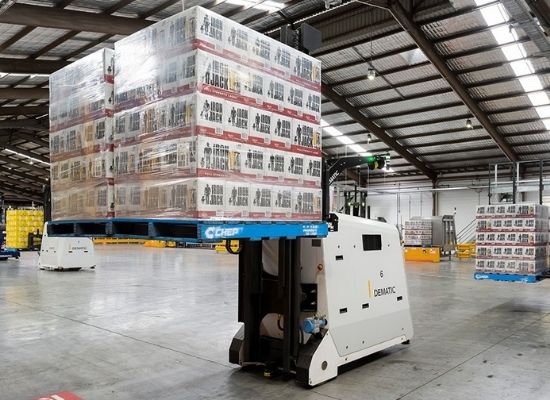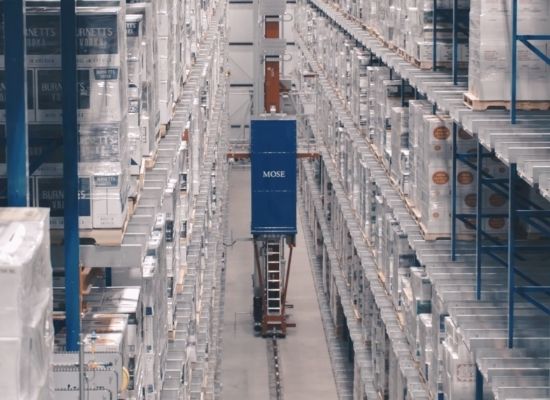May, 2024
San Francisco, USA

From managing the inventory of your SKUs (Stock-Keeping Units) to locating items in your warehouse, everything is now done with the help of technology. Major developments in the logistics side of the alcohol industry have immensely transformed the way things are managed in an alcohol beverage company’s warehouse. Rapid globalization and the growing e-commerce environment have compelled retailers and manufacturers to resort to improvements in their supply chain and logistics to meet the rising global demand. Smart warehousing is one of the great solutions to meet these demands. A culmination of automating various components of the warehouse operations, smart warehousing is simply defined as the digitization of your warehouse. It helps in automating the various internal warehouse processes, tracking the operations in real-time, and evaluating the warehouse performance. With the help of technology and automation, collecting and aggregating data to deliver insights has become easy. Thus, smart warehousing basically means streamlining the different operations in the warehouse in order to achieve maximum efficiency.
When it comes to the alcohol industry, smart warehousing has been a great solution for many beverage distribution giants like Breakthru Beverage Group. They rebuilt a 35-acre warehouse facility installed with automated storage and retrieval system which not only gave them the ability to store 10 pallets deep but also helped them to balance their inventory and movement across the system. Smart warehousing has been a great problem-solver and can be incorporated easily into your company’s warehouse.
Smart warehousing turns every small process in your warehouse into an automated one. Whether it is receiving stock, sorting it out, organizing it, or prepping it for shipment. Right from the production of your product to its delivery, everything becomes technology-driven and is well accounted for. Before incorporating smart warehousing in your facility, it is essential to strategically organize your warehouse. You need to understand the layout of the facility and know the length and width of the aisles. It is also essential for you to know the product-moving ratio where you are aware of the faster-moving brands and products in your warehouse. Once you are aware of your products and facility, you can integrate the following developments in your warehouse.
Embedding the physical inventory with sensors and tags in the warehouse helps in collecting data. This can help in keeping a track of the inventory and transferring data over the cloud or through a network. It will eventually help in automating the production and distribution of the products that enable you to know where your product is being delivered to. Bar Fly owned by Local Libations is an intelligent keg monitoring system where geotags are attached to individual kegs. A smartphone app or computer helps in tracking the beer volume and provides automatic reordering. This is done with the help of predictive data analysis of the consumption patterns.
Artificial Intelligence is managing inventory around the warehouse with the help of a computer or a robot controlled by a computer. Locating products, arranging inventory, and even determining the best box type for a specific shipment can all be done with the help of AI.
If a shipment of wine bottles is to be delivered to a certain destination, AI helps in determining the box in which those particular wine bottles can be delivered, the packaging and delivery requirements of the destination they have to be delivered to, and even the details of the person it has to be delivered to without the involvement of a human.
[[relatedPurchasesItems-35]]
Replacing paper tracking methods with digital tags and barcodes, RFID allows you to acquire information by simply pointing onto the product. The scanners transfer the data between the digital tag or sensor and an automated scanning system that records the information of the product. This allows you to automatically document the inventory of products using barcode labels, rack labels, and computer-controlled hardware. Vigneti Massa is a family-owned winery in Piedmont that has embedded RFID tags in their aluminum caps which helps them to avoid counterfeiting of their wines and also track the end consumer.

RFID embedded in the cap of Vigneti Massa Wines; Image Source - atlasRFIDstore
A more trending and easier option is the use of wearables which includes devices like smartphones, tablets, glasses, and head-mounted devices. This helps the employees in gathering immediate information about the product wherever they are in the warehouse. This can help them in constantly acquiring information instead of relying on an unmovable workstation.
One of the biggest game-changer in the warehouses, AGVs are a great solution to reduce the requirement for manual labor. They are used for transportation and handling tasks which were earlier done by manual forklifts, conveyors, and towing machines. These automated vehicles follow guide paths or sensors and optimize warehousing. Lion Beer Australia, a subsidiary of Kirin Holdings, deployed AGVs by Dematic, an intralogistics innovator, that has helped Lion beer to automate and streamline their operations and manage their inventory well.

AGV deployed by Lion Beer Australia; Image Source - Dematic
Tracking real-time data in the warehouse, a WMS helps in tracking the everyday operations. The data helps in creating reports, revealing problems in the operations, and tracking the efficiency of the processes.
This can help in improving the systems and operations within the warehouse and identify and fix the issues in them. It also helps you to effortlessly track your inventory, ensure the storage of goods, along with the packing and shipping of the products. This can also be done with the help of a SaaS platform provided by a third party which can help you in managing your inventory. Heaven Hill Distillery improved its warehouse space and efficiencies with the support of a complete automated warehouse management system by Westfalia USA.

Heaven Hill Distillery, Image Source - Westfalia USA
Smart Warehousing has changed the face of logistics and the supply chain in the alcohol industry. Here are some of the key benefits of incorporating a smart warehouse in your facility.
It Minimizes Errors since all the operations are automated and there is less involvement of manual labor, there is a reduction in errors when it comes to recording data about the inventory or the information about a product.
With AGVs and an Automated Warehouse System, there is an Increase in Safety and Security due to the negation of human labor. This reduces the involvement of hard tasks like picking up heavy products which are now done with the help of an AGV.
There is an Increase in Productivity and Efficiency in the facility as there are minimum errors and everything is managed automatically.
An increase in productivity and efficiency further leads to an Increase in Profits which are interrelated to the operations of the warehouse. If the warehouse is managed efficiently, the products will move out faster and be sold quickly which will eventually lead to higher profits.
With a technology-driven warehouse and automated tasks, there will be Less Staff Required On-Site which will reduce the manual labor to run operations in the warehouses. It will only require a cross-trained group of core employees to run the warehouse.
Lesser workforce and Automated Systems means Reduced Cost. Since everything is driven by technology and it is a one-time investment, the operational cost of running the warehouse is low. With automated systems in place, there is less pilferage, and that eventually reduces cost.
Customers and stakeholders want real-time data and information about their products. Real-Time Data Visibility with the help of WMS gives the operators a bird’s eye view of the entire warehouse and how the different beverage brands are performing. It also enables the customer to track real-time information about their product.
AI-enabled warehouses along with the WMS help in managing the inventory adeptly and stacking the products at the right places. This allows alcohol brands to Utilize Space in the warehouses and Maintain the Required Inventory.
The automated e-commerce delivery system allows brands to complete the sorting, procuring, and packaging process accurately which allows Quicker Shipping. Due to the absence of errors, there is Order Accuracy and Fewer Returns which enable them to increase Customer Retention that eventually leads to higher profits.
With the help of advanced analytics, AI, and IoT, your alcohol brand is able to get deeper insights into the order processes. This helps in Predicting the Future Demand and order levels that allow you to procure your inventory accordingly.
Overall, smart warehousing is a cost-effective process to manage your inventory and a great way to build a loyal customer base for your brand.
Article by Shreya Kohli, Beverage Trade Network
Header Image Source - Interport.us